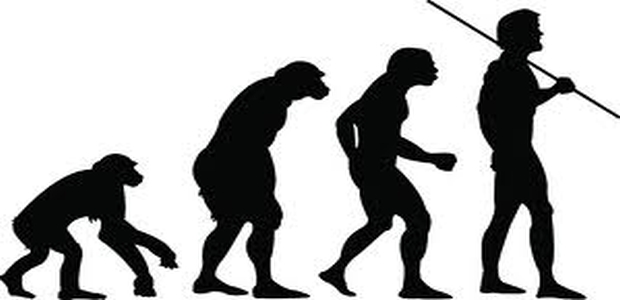The Earth is estimated to be about 4.5 billion years old. Roughly 370 million years ago, the first four limbed land animals, the amphibians, appeared on Earth. Despite the immense odds and evidence to the contrary, many scientists still believe that life of some sort was generated from their chemical ingredients by some random process.
Its quite interesting to notice that while several new species have evolved in the past few million years, no new higher categories of organisms have appeared for millions of years. If changes in organisms occur by the accumulation of small, random changes that are screened through natural selection as neo-Darwinists argue, why have no new basic body plans or phyla evolved in almost 600 million years?
Charles Darwin, also known as the father of Evolution established that all species of life have descended over time from common ancestors. Darwin himself and neo-Darwinists have claimed that evolution proceeds gradually in small steps, as we have observed. Although Neo Darvinists focus more on the molecular genes rather than actually explaining the origin of life.
But when we look at the fossil records they provide no unambiguous examples of a gradual transition of one organism evolving into another organism. When a new species, or a new class, or a new order, or new genus, of organism appears on the fossil record, the new organism appears fully formed. No undoubted transitional fossil has been found more than 130 years after Darwin introduced his theory.
Prehistoric Disasters – The dinosaurs became extinct about 65 million years ago. Not only did the dinosaurs become extinct but up to eighty-five percent of all species of life forms that existed at that time became extinct in what must have been a worldwide catastrophe of some sort. Ancient life scientists know of at least six other mass extinctions where hundreds of thousands of species, 60-85 percent of all then existing species became extinct.
Since Darwin’s day, biology and neo-Darwinism have maintained that competition, the struggle for existence, dominates relationships between species. However, competition is rarely observed among wild animals of a different species. Similar species living in the same area avoid competition by dividing their habitat into ecological niches. Certainly there is little evidence for Darwin’s postulated “struggle for existence.” No breeding experiment has produced a new species of animal. More importantly it should be observed that our Sun is one star out of about 100 billion stars in our galaxy alone.
According to Sir Francis Crick, an English molecular biologist estimated that there are one million planets in our own galaxy where life could have originated. He also says that there are 100 billion galaxies of various sizes in the universe. There are billions of planets in the universe where conditions were and are favourable for life.Archaeologists realize that they have a tremendous task in trying to explain why humans rather suddenly gave up their nomadic hunting and gathering lifestyle for a life of farming. Why did a lifestyle that had been so successful for tens of thousands of years give way to one so different. Modern hunting peoples, though living for the most part in marginal areas, are frequently better nourished and always more leisured than their agrarian neighbours. Crick was the co-discoverer of the DNA molecule along with Thomas Watson.
Agrarian peoples not only must work a good deal harder for their sustenance, but are much more precariously balanced in relation to their environment, since they have substantially altered the natural ecology of their surroundings. Asia has made some remarkable discoveries in recent times when it comes to the bones of human creatures.
Reports of gigantism exist throughout history, with some nations and tribes taller than others. Bones of over 10 feet tall have been found in southeastern China. Hunting weapons of a large size were found that indicate its user to be at least 13 feet tall. A human skeleton 17 feet i.e 5 metres tall was discovered at Gargayan in the Philippines, while in Sri Lanka remains of humans were said to be about 4 Metres tall. A human skeleton which measured to be about 3.4 metres was discovered in Tura, Assam.
However the official recorded tallest man is said to be Allan Hadap of the US who was measured at 8 ft 11 in (2.2 metres). This is confirmed by the Guinness Book of World Records.
Though these discoveries remain sketchy and not much talked about, the mysteries still remains with respect to our evolution. Was there a missing link of evolution in our prehistoric era. But even if its proved that they were not large in size they probably had a gigantic spirit; their vast knowledge and great powers made them giants comparing with the dwarfs that we are.

































